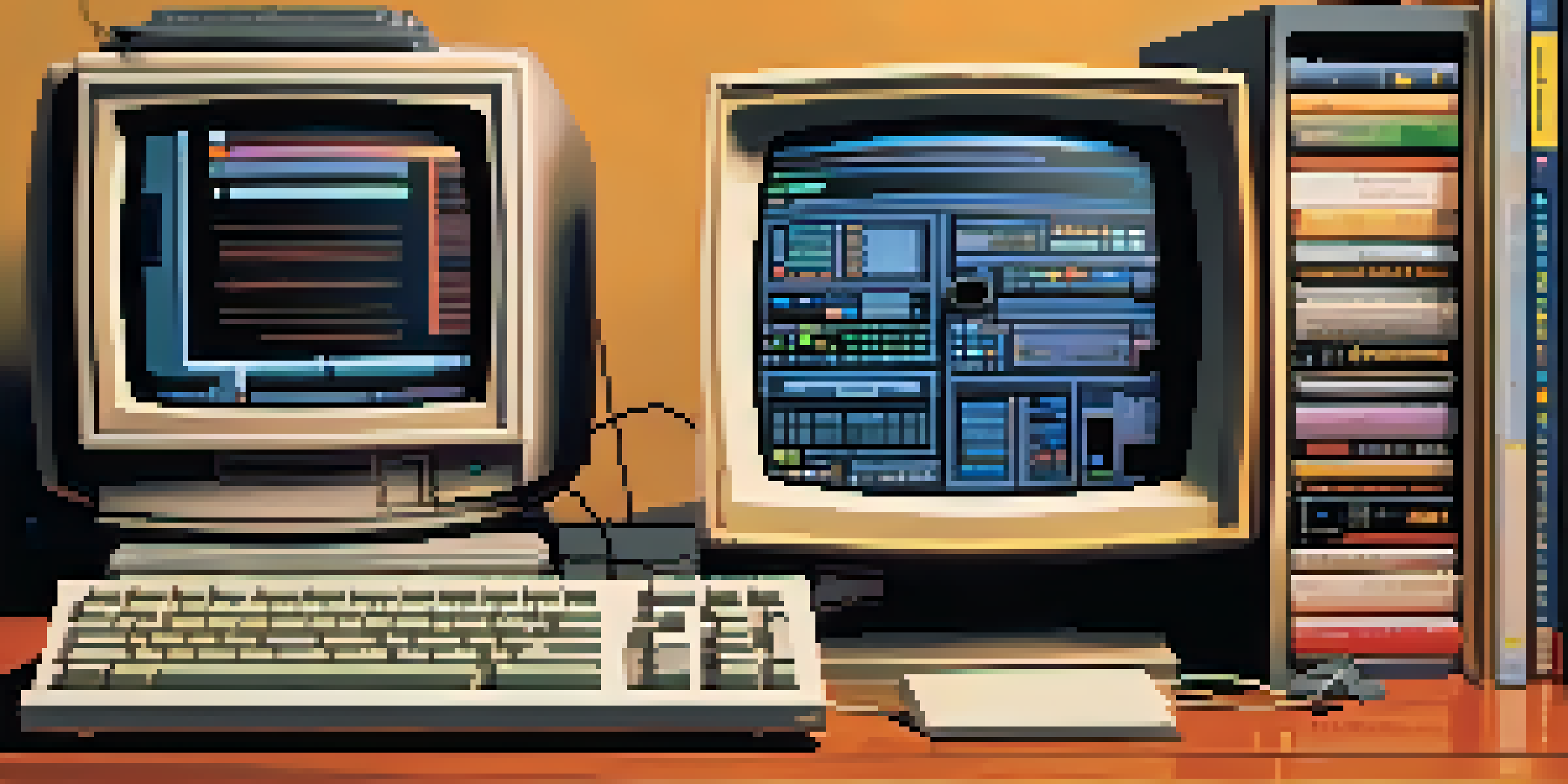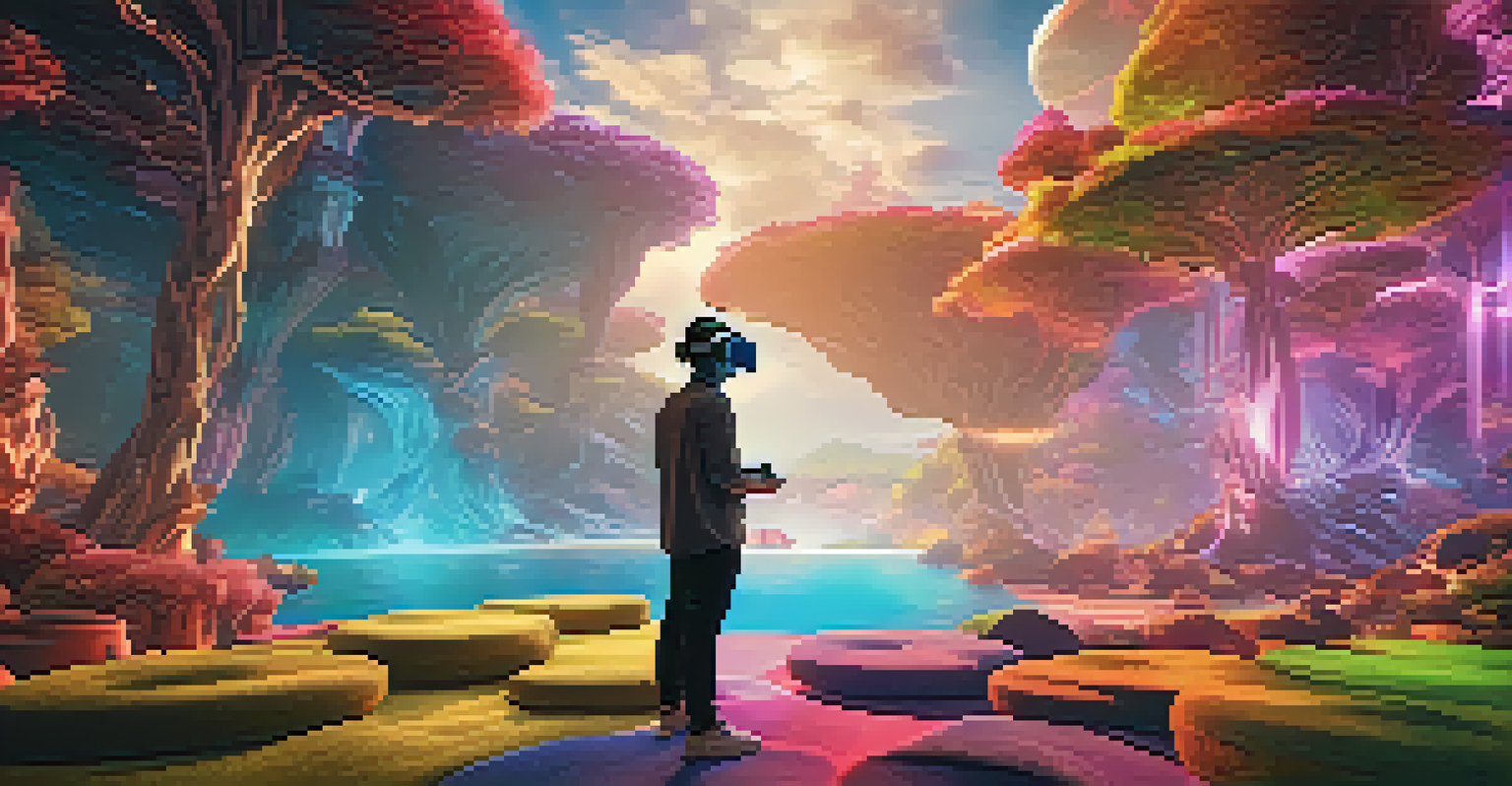The Evolution of User Interfaces: Past, Present, and Future

The Dawn of User Interfaces: Command Lines and Text-Based UIs
In the early days of computing, user interfaces were predominantly text-based. Users interacted with computers through command lines, typing specific commands to execute tasks. This required a deep understanding of the system, making it less accessible for the average person.
The greatest innovations of today are only possible because of the user interfaces that allow people to engage with technology in meaningful ways.
As computers became more common in homes and offices, there was a growing demand for interfaces that were easier to navigate. This led to the development of graphical user interfaces (GUIs), which transformed the way users interacted with technology. Suddenly, users could point and click instead of memorizing commands.
The shift from command lines to GUIs marked a significant evolution, opening the door for more intuitive interactions. It laid the groundwork for the user-centric design principles we prioritize today, emphasizing usability and accessibility for all users.
The Rise of Graphical User Interfaces: A Game Changer
The introduction of GUIs in the 1980s revolutionized user interaction with computers. With windows, icons, and menus, interfaces became more visual and engaging, allowing users to navigate with ease. This shift made technology more approachable, leading to a surge in computer adoption.

Iconic systems like Apple's Macintosh and Microsoft Windows showcased how design could enhance user experience. Users were no longer confined to a command line; instead, they could interact with their devices through graphical representations of files and functions, making tasks feel more natural.
Evolution from Command Lines to GUIs
The transition from text-based command lines to graphical user interfaces revolutionized how users interact with technology, making it more accessible.
This era marked a pivotal moment in interface design, highlighting the importance of aesthetics and user experience. As technology continued to evolve, the principles established during the GUI revolution would influence future developments in user interfaces.
Mobile Revolution: Touch Interfaces and App Design
The advent of smartphones brought about another significant shift in user interfaces. Touchscreens replaced traditional input methods, allowing users to interact directly with their devices using gestures. This change made technology accessible on-the-go and tailored for everyday use.
Good design is a lot like clear thinking made visual.
Mobile apps emerged as a new frontier for user interaction, emphasizing simplicity and functionality. Designers focused on creating intuitive experiences that catered to users' needs, often prioritizing speed and ease of access over complex features.
The mobile revolution underscored the importance of responsive design, ensuring that interfaces adapted seamlessly to different screen sizes. This adaptability became a crucial factor in user experience, shaping the way we approach design in a multi-device world.
The Era of Voice Interfaces: A Hands-Free Experience
As technology progressed, voice interfaces began to take center stage, offering a hands-free alternative to traditional input methods. Tools like Siri, Alexa, and Google Assistant allow users to interact with devices through natural language, making technology even more accessible.
Voice interfaces change the game, enabling users to multitask and engage with technology in a more conversational manner. This shift has implications for everything from smart homes to customer service, as businesses look for ways to integrate voice technology into their offerings.
Mobile and Touch Interface Growth
The rise of smartphones and touch interfaces has led to a focus on simplicity and responsiveness in app design, enhancing user experiences on-the-go.
However, the rise of voice interfaces also presents challenges, such as ensuring accuracy in understanding diverse accents and languages. As this technology continues to evolve, developers must prioritize user experience and strive for inclusivity.
Augmented and Virtual Reality: A New Dimension of Interaction
Augmented Reality (AR) and Virtual Reality (VR) are pushing the boundaries of user interfaces by immersing users in entirely new environments. These technologies offer unprecedented opportunities for interaction, allowing users to engage with digital content in three-dimensional spaces.
With AR, information can be overlaid in the real world, enhancing how we perceive our surroundings. Applications range from gaming to education, providing users with interactive experiences that blend physical and digital realities.
VR takes this one step further, creating fully immersive environments that can transport users to different worlds. As this technology matures, we can expect to see it become more integrated into everyday applications, from training simulations to virtual meetings.
The Role of Artificial Intelligence in User Interfaces
Artificial Intelligence (AI) is becoming a key player in shaping the future of user interfaces. By leveraging machine learning and data analytics, AI can create personalized experiences that adapt to individual user preferences and behaviors.
From chatbots that provide instant customer support to predictive text suggestions, AI enhances usability and efficiency in everyday tasks. As these technologies become more sophisticated, they can anticipate user needs and streamline interactions.
AI Enhances User Experience
Artificial Intelligence is increasingly shaping user interfaces by personalizing interactions and improving efficiency, while also raising concerns about data privacy.
However, the integration of AI also raises questions about privacy and security. As we embrace these advancements, it will be crucial to maintain transparency and user control over their data.
Looking Ahead: The Future of User Interfaces
As we look to the future, the evolution of user interfaces will continue to be driven by technological advancements and user expectations. Innovations like brain-computer interfaces and advanced gesture recognition could redefine how we interact with devices.
The future will likely see a greater emphasis on seamless integration across multiple platforms, ensuring that user experiences are consistent and intuitive, regardless of the device. This interconnectedness will be essential as we move towards a more digital-centric world.

Ultimately, the evolution of user interfaces reflects our ongoing quest for simplicity and efficiency in technology. As we adapt to new innovations, the focus will remain on creating user-friendly experiences that empower individuals and enhance their interactions with technology.